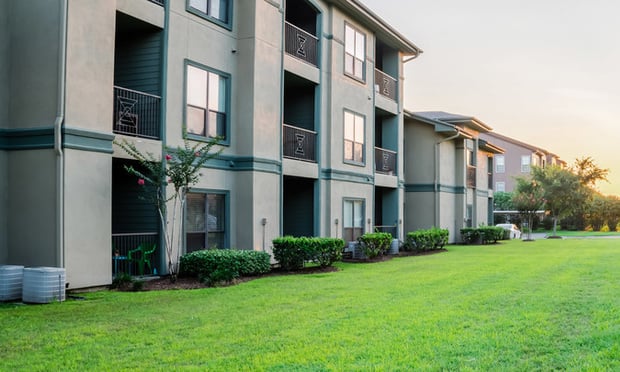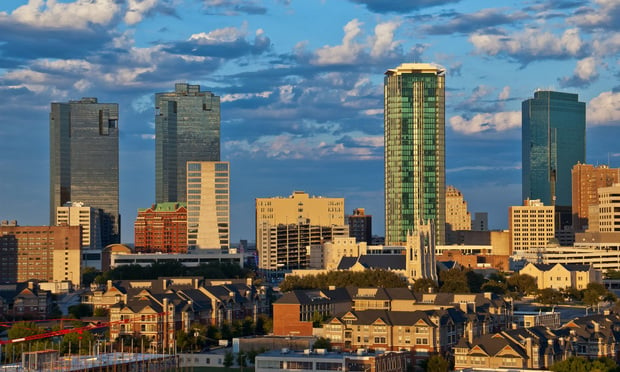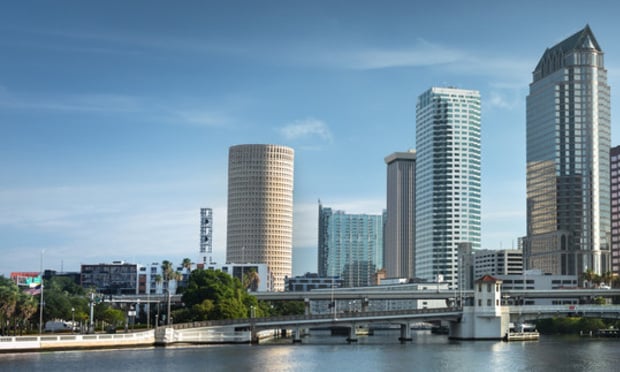Job growth is at an all-time high, bringing with it an across-the-board booming office market, with construction down and absorption high in comparison to 1999 year-end statistics. Unless the economy bottoms out, they say a healthy balance will continue in 2001.
Austin has the highest occupancy and highest rents. "We've never had negative absorption," says Walter Saad, Insignia/EST of Texas Inc.'s Austin regional director. He predicts absorption will hit two million sf when year-end calculations are complete. There's been no hard fallout from failing dot-coms, six of which have gone belly up in recent months. "A vast majority of that space already has been backfilled," he says.
Two years ago in the Dallas-Ft. Worth region, 18 million sf had delivered and only half of it had been absorbed. This year, 11.2 million sf has delivered and 6.5 million sf had been absorbed by third quarter's end. Absorption should equal 1999, with year-end figures of 7.1 million sf being predicted, says Steve Thelen, Cushman & Wakefield of Texas Inc.'s senior director. New product is "being soaked up" nearly as fast as it delivers, he says.
The Dallas CBD's class-A vacancy of 12% is the highest in the region. The blow is being leveled by a pressing demand for newer buildings, preferably high-tech garden offices, and space more conveniently located to employees' homes. "Everyone looks at the commute time here," says Michael O'Hanlon, Insignia/ESG of Texas Inc.'s executive director in Dallas. CBD rents are running in the mid-$20s and companies don't seem to mind the "give and take" of a few dollars that the suburban submarkets are bringing. "But," he says, "nobody's giving up on the Downtown here."
In Houston, construction's not as brisk as it was in 1999 and that's really good, says Cushman & Wakefield's Houston office. Less than two million sf will deliver this year, down three million sf from last year.
The city's in a healthy "point of equilibrium," says Pete Johnston, senior vice president for Equity Office Properties in Houston. Nearly two million sf had been absorbed by third quarter's end in comparison to 1.9 million sf for all of 1999.
Insignia's Peyton Collins, executive director for the Houston office, says the CBD has a 98% class-A occupancy, with rents fetching between $24 per sf to $26 per sf, on par with the rest of the region.
In Denver, the 23-million sf CBD remains a Colorado hotspot, commanding as much as $25 per sf. About one million sf is in the CBD pipeline that, when it delivers, is expected to take rents higher. Overall, the metro market has a 10% vacancy rate.
Want to continue reading?
Become a Free ALM Digital Reader.
Once you are an ALM Digital Member, you’ll receive:
- Breaking commercial real estate news and analysis, on-site and via our newsletters and custom alerts
- Educational webcasts, white papers, and ebooks from industry thought leaders
- Critical coverage of the property casualty insurance and financial advisory markets on our other ALM sites, PropertyCasualty360 and ThinkAdvisor
Already have an account? Sign In Now
*May exclude premium content© 2024 ALM Global, LLC, All Rights Reserved. Request academic re-use from www.copyright.com. All other uses, submit a request to [email protected]. For more information visit Asset & Logo Licensing.








